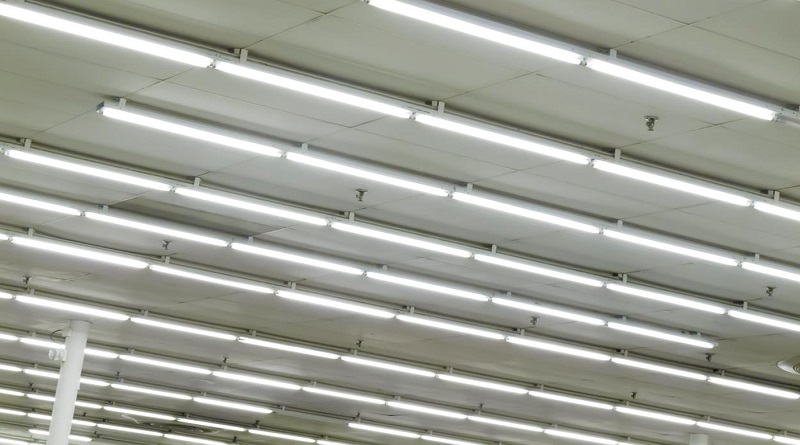COP-4: African region, World Alliance advocate phase-out of mercury-containing lighting, amalgam
The African region and the World Alliance for Mercury-Free Dentistry on Monday 21, 2022 submitted proposals to amend some text of the Minamata Convention on Mercury while addressing the plenary at the ongoing Minanata Convention COP-4 taking place in Bali, Indonesia. Proposals addressed to the President of the Convention by bodies are presented below.
African region statement on the
Lighting Amendment to Annex A of the Minamata Convention on Mercury
presented by the African region to the 4th Conference of Parties to the Minamata Convention on Mercury, in-person COP4.2, 21st March 2022
Madam President, thank you for giving me the floor.
The Africa region recognizes that, lighting is crucial in promoting livelihoods. Through our proposal to amend Annex A of the Minamata Convention on Mercury, we took the first step towards a global phase-out of mercury-containing fluorescent lighting. The proposed amendment suggests inserting three new rows into the table in Part I of Annex A, in order to phase-out the most common types of fluorescent lighting after 2024 and 2025.
The case to phasing out fluorescent lamps – both CFLs and LFLs – is already justified today from a public health, environmental, technical as well as economic perspective. The EU for instance, has adopted laws to phase-out fluorescent lighting as early as 2021. Similarly, twenty-one African countries in Southern African Development Community (SADC) and Eastern Africa Community (EAC) are in the process of adopting regional standards that will phase-out CFLs and LFLs and shift markets to energy efficient alternatives which are also mercury free, in the next few years.
Madam President
Significant progress has been made in the development of internationally recognised quality, safety and performance standards for energy efficient lighting products such as LEDs. The lighting proposal seeks to build on this progress, aligning with many countries’ regulations and policies across the world, to ensure we no longer use mercury in lighting.
Madam President
Taking into account this policy trend, the dates in the proposed lighting amendment, aim to address two key issues:
- Provide sufficient time for Parties to the Convention to comply, including the time necessary for the lighting supply chains in their markets to adjust; and
- As countries around the world begin to eliminate fluorescent lighting from their markets, it is important to ensure that those without such regulations do not become dumping grounds for fluorescent lighting products.
Madam President
According to UNEP, fluorescent lighting represents about 10% of the mercury products listed in Annex A globally. Collection of used fluorescent bulbs at the end of life is both expensive and challenging – so the vast majority of used fluorescent lamps end up going to landfills – polluting the planet for generations to come. Transitioning to mercury-free alternatives will reduce mercury waste.
The proposal by the Africa region on lighting would therefore prevent the manufacture, import, and export of mercury-containing lamps, in favour of mercury-free alternatives. We advocate for the adoption of this proposal because it will re-enforce the various fragmented policies already in place in different countries and therefore ensure uniformity in compliance to the convention as pertains to this category of products. In addition, these alternatives last 2-3 times longer than fluorescents and are twice as efficient, therefore, significant energy and financial savings will accrue.
In conclusion, the Africa group is looking forward to engaging further in the contact group if it is so established.
Africa Regional Statement on Amendment proposal of Dental Amalgam
Madam President,
I am speaking on behalf of the Africa region,
As you are all aware, the experts group reviewing Annex A, Part II concluded that Mercury-free dental filings are cost-effective, and work just as well or better compared to mercury amalgam used in restorative dentistry.
We support this statement and affirm that indeed Mercury free dental fillings are readily available and used in low-income countries. These mercury alternatives are affordable, accessible and can even be operationalized in rural settings where there is no electricity.
We have seen many countries in Europe, Asia and in our region where the use of mercury in dental amalgam is totally phased out – some with the aid of national laws and some through practice. This is a demonstration that we can do it as a collective.
Madam President,
Africa has submitted a proposal to gradually phase out the use of mercury in dentistry in a gradual manner. We propose to begin with end dates in the use of amalgam for vulnerable populations specially for women and children. In view of the Objectives of the Convention, we consider it important that parties have national plans for a gradual phase out. The region also wishes to address the manufacture, import, domestic use and sale of this toxic chemical in the coming year.
Madam President,
Our appeal is to ensure that the ultimate goal of protecting human health and the environment from mercury emissions and releases from the dental sector, is adequately met. We believe that the adoption of the amendment proposal on dental amalgam will serve humanity.
In this regard, Madam President, we would like to express our openness and flexibility to work with delegates from other regions. We are therefore ready to work in a contact group if such is to be established.
World Alliance for Mercury-Free Dentistry to Plenary Session 21 March 2022
Madame president, greetings from the World Alliance for Mercury-Free Dentistry. It is our honor to be at COP4.2 here in Bali, Indonesia and benefit from your wondrous hospitality.
The World Alliance for Mercury-Free Dentistry salutes the World Health Organization. After a careful and comprehensive review, WHO calls a worldwide switch to minimally-invasive dentistry. WHO makes clear that the alternatives are minimally invasive and that amalgam is NOT minimally invasive. The alternatives are tooth-friendly, amalgam is tooth unfriendly.
The World Alliance salutes the Africa Region for its leadership from the start of the negotiations. Now the region steps forward with a realistic plan to move the world toward or to mercury-free dentistry. We are deeply grateful to all 54 governments.
The World Alliance salutes the European Union and its 27 Member States for its plan to move our world toward mercury-free dentistry via focus on ending amalgam use in children, pregnant women, and breastfeeding women.
Make Dental Amalgam History to protect our children and our planet.
Vietnam, Philippines, and New Caledonia.
Tanzania, Mauritius and Zambia,
Deutschland, France, and the UK,
Moldova, Slovenia, and Spain,
St Kitts & Nevis,
All of these jurisdictions, and dozens more, do not allow amalgam use in children. Many more, like Canada and the United States, have official recommendations from their health ministry to stop amalgam use in children.
Anyone who tells this conference that you must put mercury in children’s mouths instead of nontoxic alternatives is flying in the face of facts. If 40 countries can stop amalgam use in children, well, so can all of us. Indeed, the Secretariat in its report makes clear alternatives work, that alternatives to amalgam
The Preamble to this Convention focuses on children, on women, and on future generations. To follow the very purpose of this Convention, this Convention should amend the amalgam section to provide special protections for children and for pregnant and breastfeeding women.
In the past, governments wondered—is mercury-free dentistry realistic? Now we know it is.
* Can we achieve mercury-free dentistry in a short time? Yes, as Moldova and New Caledonia showed us.
* Can we achieve mercury-free dentistry in public programs? Yes, Madame President, Indonesia showed us, as has Poland.
* Can we achieve mercury-free dentistry in our armed forces? Yes, India and Bangladesh showed us.
* Can we achieve mercury-free dentistry in our hospitals? Yes, Benin and Cameroun showed us.
One-seventh of all countries are mercury-free dentistry countries, says WHO. Mercury-free dentistry is no longer a dream.
The major diversified dental products companies with distribution chains exit one by one. What is left companies operating under the radar screen without formal distribution networks or access to capital. These mercury peddlers remind us of the tobacco companies – their entire product line is poison.
Here is our time to end amalgam for children and pregnant women. Here is our time to write a game plan, a flexible road map for the end of amalgam. The best treaty of the 20th century was the Montreal Protocol. For the 21st century the best one can be the Minamata Convention – the best. The ideal treaty on toxics. But it cannot be the best if this Convention goes home Friday with not deadline to implanting mercury into the mouths of children.
By Rogar Baro and Charlie Brown




